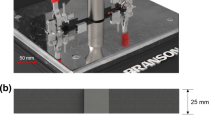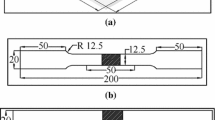Abstract
In the rubber industry, rheometric properties are critical in defining processing times and temperatures. These parameters of rubber compounds are determined by time-consuming and expensive laboratory studies performed in a rheometer. Machine learning methods, on the other hand, may be used to estimate rheometric properties in seconds without the need for any samples or laboratory experiments. In this research, an artificial neural network (ANN) and two hybrid approaches of ANN with particle swarm optimisation (ANN-PSO) and genetic algorithm (ANN-GA) are used to predict the rheometric properties of a rubber compound, namely, minimum and maximum torque (ML and MH), scorch time (ts2), and 90% cure time(t90). A multi-layer perceptron (MLP) is utilised consisting of an input layer, a hidden layer, and an output layer. Whilst the network is trained by the Levenberg–Marquardt backpropagation algorithm in ANN, the network is trained by PSO and GA in hybrid approaches ANN-PSO and ANN-GA, respectively. ML, MH, ts2, and t90 are estimated using both process parameters and raw material composition as input. Dataset comprises 220 batches of a selected rubber compound. It is divided randomly into two sets as training and testing data with ratios of 85% and 15%, respectively, for each machine learning method. The prediction results are expressed as mean percentage error (MAPE). Although ANN is a powerful tool for predicting rheometric properties of rubber compounds, hybrid ANN methods decrease prediction error, resulting in better forecasts.







Similar content being viewed by others
References
González Marcos A, Castejón Lımas M, Alba Elías F, Martínez De Pısón Ascacıbar FJ (2006) Estimation of cure characteristics in rubber extrusion lines. In: Proceedings of the 8th WSEAS Int. Conference on Automatic Control, Modelling and Simulation, Prague, Czech Republic, March 12–14, pp 189–194
Vijayabaskar V, Gupta R, Chakrabarti PP, Bhowmick AK (2006) Prediction of properties of rubber by using artificial neural networks. J Appl Polymer Sci 100:2227–2237
Schwartz GA (2001) Prediction of rheometric properties of compounds by using artificial neural networks. Rubber Chem Technol 74(1):116–123
Karaağaç B, İnal M, Deniz V (2009) Artificial neural network approach for predicting optimum cure time of rubber compounds. Mater Des 30:1685–2169
Diaconescu RM, Barbuta M, Harja M (2013) Prediction of properties of polymer concrete composite with tyre rubber using neural networks. Mater Sci Eng, B 178(19):1259–1267
Lubura JD, Kojić P, Pavličević J, Ikonić B, Omorjan R, Bera O (2021) Prediction of rubber vulcanization using an artificial neural network. Hem Ind 75(5):277–283
Wang B, Ma JH, Wu YP (2013) Application of artificial neural network in prediction of abrasion of rubber composites. Mater Des 49:802–807
Xiang KL, Xiang PY, Wu YP (2014) Prediction of the fatigue life of natural rubber composites by artificial neural network approaches. Mater Des 57:180–185
Sresungsuwan N, Hansupalak N (2013) Prediction of mechanical properties of compatibilized styrene/natural-rubber blend by using reaction conditions: Central composite design vs. artificial neural networks. J Appl Polym Sci 127(1):356–365
Ghaffarian N, Hamedi M (2020) Optimization of rubber compound design process using artificial neural network and genetic algorithm. IJE Trans B: Appl 33(11):2319–2326
Zhang SL, Zhang ZX, Xin ZX, Pal K, Kim JK (2010) Prediction of mechanical properties of polypropylene/waste ground rubber tyre powder treated by bitumen composites via uniform design and artificial neural networks. Mater Des 31(4):1900–1905
Li L, Choi YJ, Boonkerd K, Zhang J, Gao LJ, Zhang ZX, Kim JK (2013) Prediction of the chlorobutyl rubber/natural rubber blend properties using a genetic algorithm and artificial neural network. Rubber Chem Technol 86(2):190–204
Merikoski S, Laurikkala M, Koivisto H (2001) An adaptive neuro-fuzzy inference system as a soft sensor for viscosity in rubber mixing process. Neural Netw Appl 1:287–291
Karaağaç B, İnal M, Deniz V (2012) Predicting optimum cure time of rubber compounds by means of ANFIS. Mater Des 35:833–838
Shaosheng F, Yaonan W (2004) The measurement of viscosity in rubber mixing process based on fuzzy modelling. In: 8th International Conference on Control, Automation, Robotics and Vision Kunming, China, 6–9th December 2004
McCulloch W, Pitts W (1943) A logical calculus of the ideas immanent in nervous activity. Bull Math Biophys 5:115–133
Davalo E, Naïm P (1992) Des réseaux de Neurones. Eyrolles
Rosenblatt F (1958) The perceptron: a probabilistic model for information storage and organization in the brain. Psychol Rev 65(6):386–408
Kennedy J, Eberhart R (1995) Particle swarm optimization. Proc IEEE Int Confer Neural Netw 4:1942–1948
Shi Y, Eberhart RC (1998) A modified particle swarm optimizer. In: 1998 IEEE international conference on evolutionary computation proceedings. IEEE World Congress on Computational Intelligence (Cat. No.98TH8360), pp 69–73
Kennedy J, Eberhart RC (2001) Swarm intelligence. Morgan Kaufmann, USA
Goldberg DE (1989) Genetic algorithms in search, optimization, and machine learning. Addison-Wesley, New Jersey
Acknowledgements
This research, which is performed by DRC Kauçuk and Sakarya University, is funded by Scientific and Technological Research Council of Turkey (TÜBİTAK) with project number 119C120.
Author information
Authors and Affiliations
Corresponding author
Ethics declarations
Conflict of interest
On behalf of all authors, the corresponding author states that there is no conflict of interest.
Additional information
Publisher's Note
Springer Nature remains neutral with regard to jurisdictional claims in published maps and institutional affiliations.
Rights and permissions
Springer Nature or its licensor holds exclusive rights to this article under a publishing agreement with the author(s) or other rightsholder(s); author self-archiving of the accepted manuscript version of this article is solely governed by the terms of such publishing agreement and applicable law.
About this article
Cite this article
Uruk, Z., Kiraz, A. & Deniz, V. A comparison of machine learning methods to predict rheometric properties of rubber compounds. J Rubber Res 25, 265–277 (2022). https://doi.org/10.1007/s42464-022-00170-7
Received:
Accepted:
Published:
Issue Date:
DOI: https://doi.org/10.1007/s42464-022-00170-7




